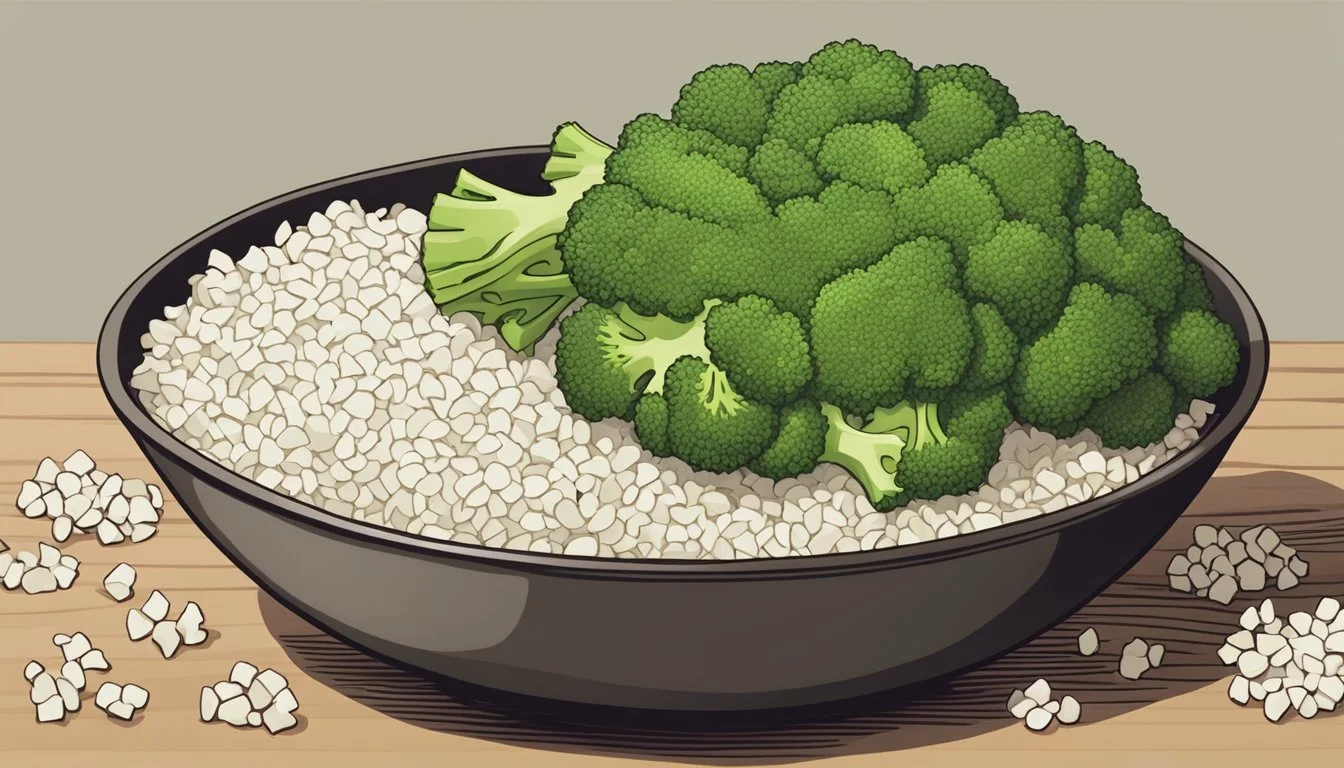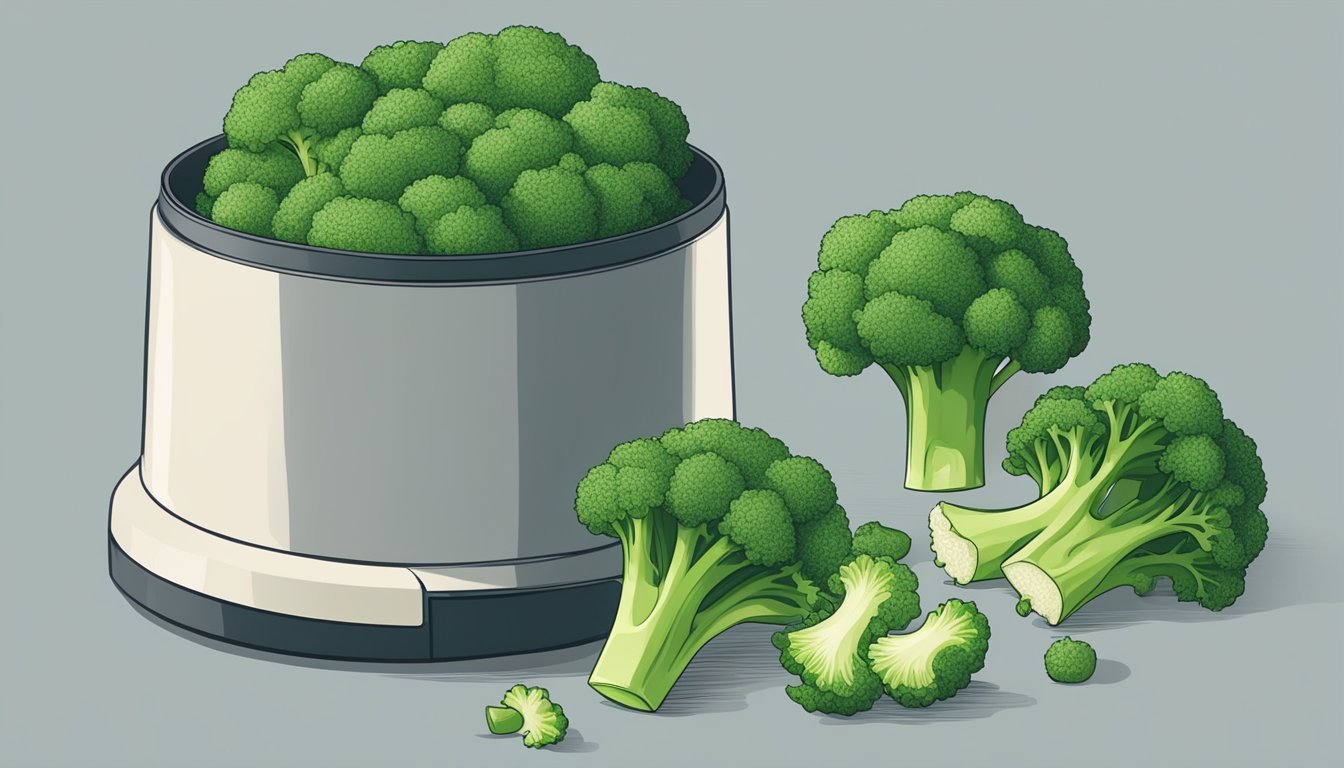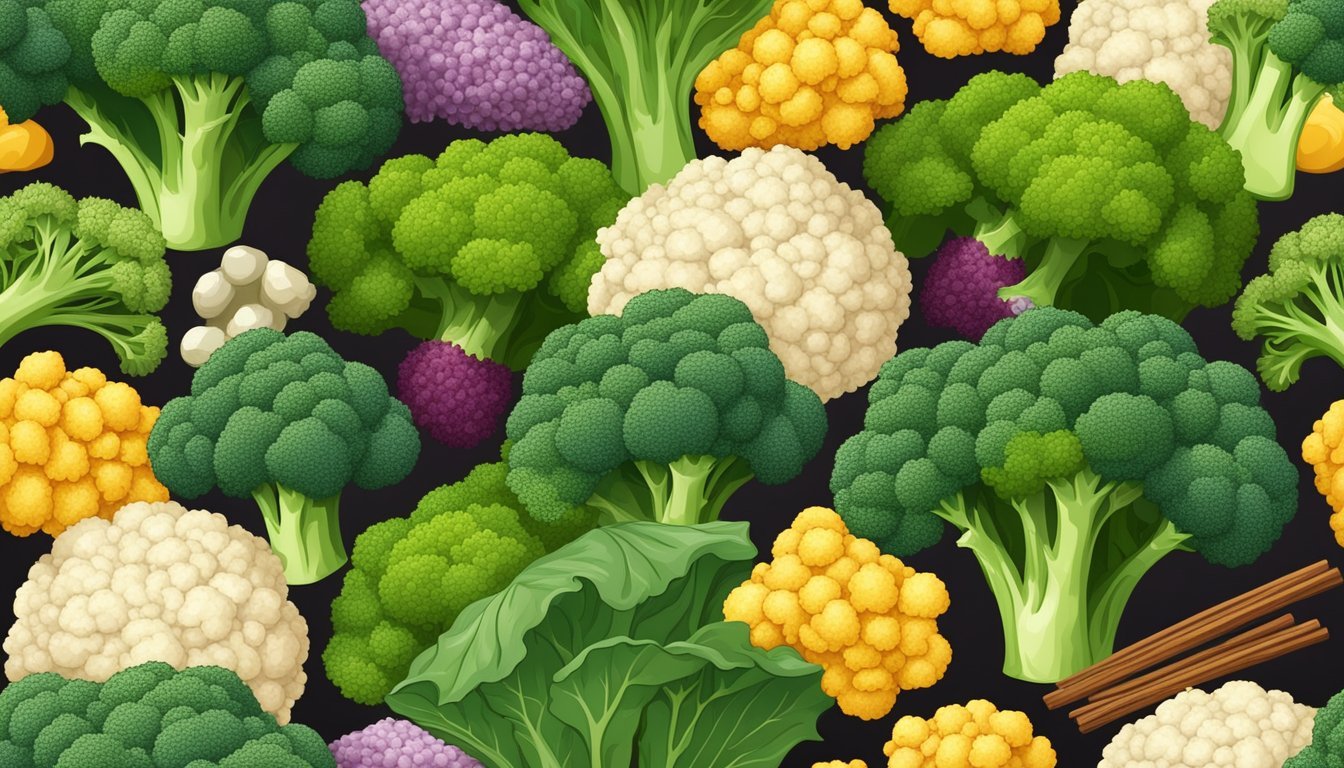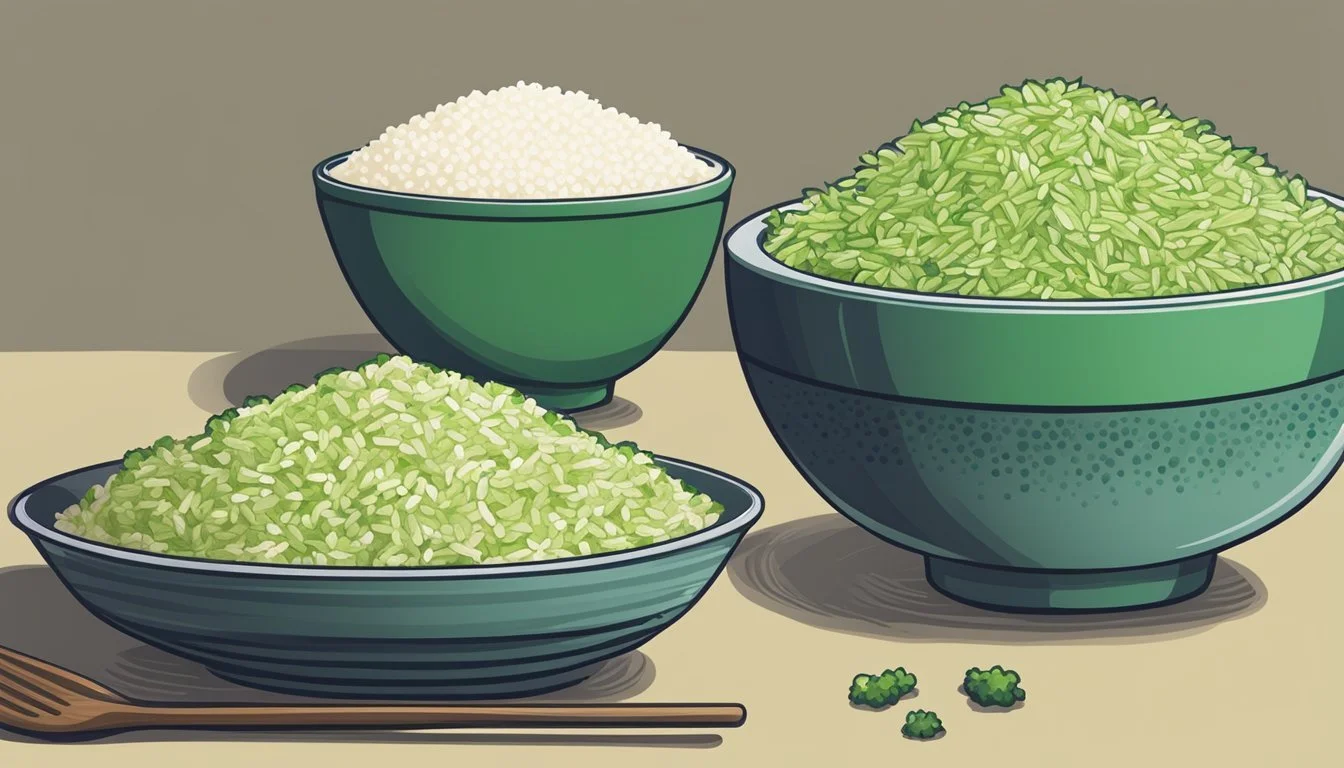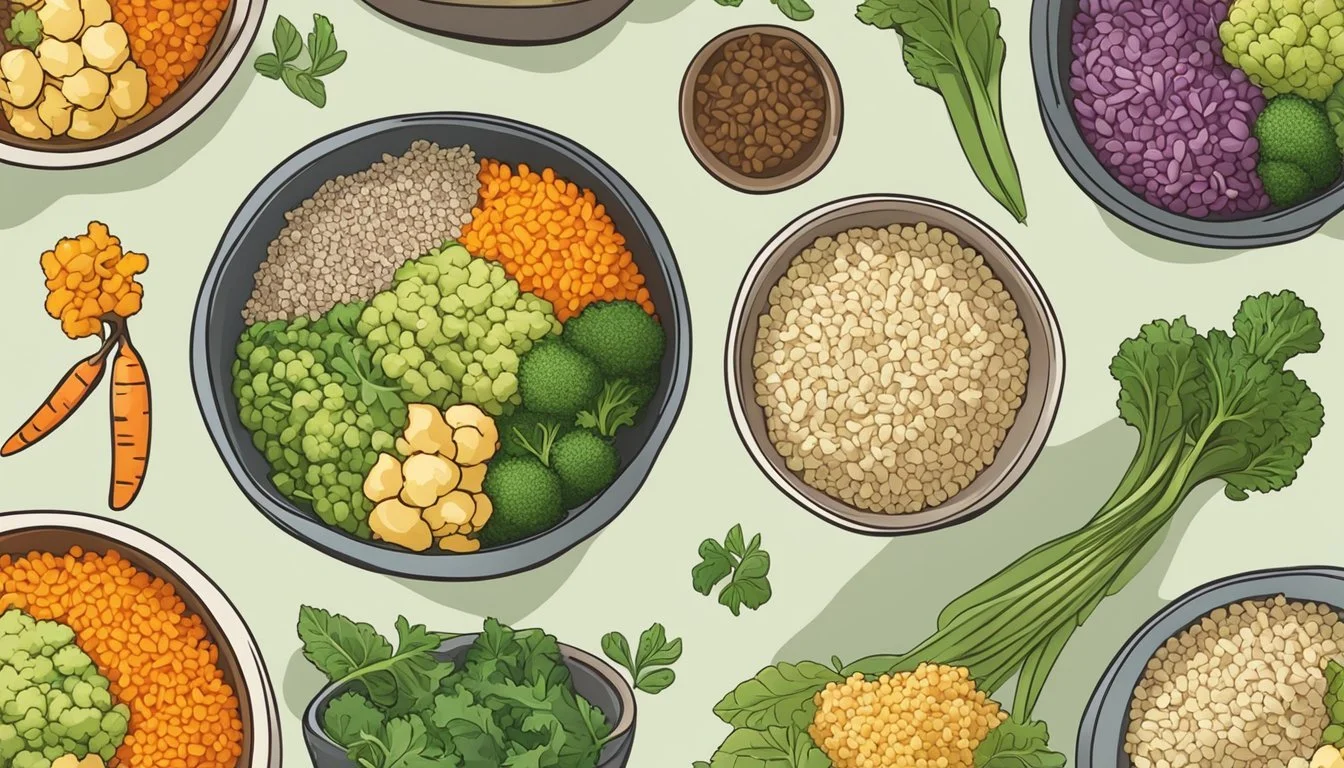Broccoli Rice Substitutes
Top Alternatives for Your Meals
Broccoli rice, a creative alternative to traditional rice, offers a low-carb option for those seeking to reduce their calorie intake or maintain a ketogenic lifestyle. Comprised of finely chopped broccoli, this substitute stands out for its rich nutrient profile, offering a wealth of vitamins, dietary fiber, and antioxidants without significantly altering the texture of dishes typically served with rice.
The versatility of broccoli rice makes it a culinary chameleon in the kitchen, as it can be steamed, microwaved, sautéed, or even eaten raw. It brings a vibrant green hue and a subtle, earthy flavor to any plate. Moreover, its health benefits align with the needs of individuals on specific diets, from gluten-free to paleo, providing a fulfilling base for a variety of meals.
When considering alternatives to broccoli rice, one might explore other vegetables that undergo a similar process of being 'riced,' such as cauliflower or sweet potato. These substitutes not only emulate the consistency of traditional rice but can also contribute a novel dimension of flavor while keeping the nutritional advantages at the forefront. They serve as fitting components for those looking to diversify their diet while still enjoying the satisfaction that a hearty portion of 'rice' can provide.
Understanding Broccoli Rice
Broccoli rice offers a nutritious, low-calorie alternative to traditional grains, rich in fiber and essential vitamins. This section explores its nutritional benefits and the common methods for creating this versatile vegetable substitute.
Nutritional Value
Riced broccoli, created by finely chopping broccoli florets and stems, is high in fiber and contains a variety of vitamins such as vitamin K and vitamin C. With its high nutrient content and low calorie profile, broccoli rice serves as a beneficial addition to any diet.
Nutritional highlights of broccoli rice:
Low in calories: An ideal option for those monitoring their calorie intake.
Rich in fiber: Supports digestive health and promotes a feeling of fullness.
Vitamins C and K: Essential for the immune system and blood clotting, respectively.
Ricing Techniques
Riced broccoli can be prepared using different techniques. Two popular methods include sautéing or steaming to preserve its color and nutrient content.
How to rice broccoli:
Sautéing: A quick method that involves cooking chopped broccoli with a bit of oil in a pan over medium heat for 2-3 minutes until it is bright green and tender, then seasoning to taste.
Steaming: Gentle cooking through steam, either in a stovetop steamer or a microwave-safe bowl, to maintain its nutritional integrity without the use of oil.
Typically used tools:
Food processor or grater for chopping
Sauté pan or a microwave-safe bowl for cooking
Low-Carb Rice Alternatives
For individuals following a keto diet or simply reducing carb intake, traditional rice can be replaced with low-carb alternatives that are high in fiber and nutrients. The following options provide versatile solutions for various dishes.
Cauliflower Rice
Cauliflower rice is a popular rice substitute made by pulsing cauliflower florets in a food processor until they resemble the texture of rice. It’s not only low in carbohydrates but also high in fiber, making it a keto-friendly option. One can expect about 2 grams of carbs and a significant 1 gram of fiber per 50g serving of cooked cauliflower rice.
Shirataki Rice
Shirataki rice, also known as "miracle rice," is made from the konjac plant. It contains a soluble fiber known as glucomannan, offering less than 1 gram of net carbs per serving. While it is virtually calorie-free, it's important to rinse it thoroughly before use to remove any unpleasant odor.
Zucchini Rice
Zucchini rice is created by grating zucchini or processing it in a food processor. This rice alternative fits well into low-carb diets, including keto, and offers a modest amount of fiber. It's a hydrating option with a mild taste, lending itself well to a variety of dishes, from stir-fries to casseroles.
Whole-Grain and Seed Substitutes
When looking for substitutes to broccoli rice, whole-grains and seeds provide nutrient-dense options with different textures and flavors. They offer a variety of health benefits, from higher protein content to supporting heart health.
Quinoa
Quinoa is a seed that serves as a complete protein source, containing all nine essential amino acids. It's also gluten-free and rich in fiber, vitamins, and minerals. Quinoa's mild, nutty taste and fluffy texture make it a versatile substitution for broccoli rice, and it typically cooks within 15 to 20 minutes.
Cook time: ~15-20 minutes
Nutritional benefit: High in protein and fiber
Best for: Gluten-free diets, protein boost
Barley
Barley is a chewy, nutritious whole-grain known to support heart health due to its soluble fiber content, which can help lower cholesterol. Its heartiness adds a satisfying component to meals. Due to its gluten content, barley is not suitable for those with gluten intolerances or celiac disease.
Cook time: ~25-50 minutes (hulled barley takes longer)
Nutritional benefit: Soluble fiber for heart health
Best for: Textural contrast, hearty dishes
Bulgur Wheat
Bulgur wheat is a whole grain with a light, nutty flavor. It’s partially cooked during processing, so it’s quick to prepare, usually in about 15 minutes. Bulgur offers a good source of protein, fiber, and various nutrients. It's a satisfying substitute that aligns with those seeking whole-grain benefits.
Cook time: ~15 minutes
Nutritional benefit: High in fiber and nutrients
Best for: Quick meals, whole-grain nutrition
Legume-Based Substitutes
Legume-based substitutes are excellent alternatives for individuals seeking high-protein and high-fiber options that can aid in digestion and have a low impact on blood sugar levels, making them suitable for those managing diabetes.
Lentils
Lentils serve as a nutritious rice substitute that can be cooked to a rice-like consistency. They are a powerhouse of protein and fiber, contributing positively to digestive health. Their low glycemic index makes them an ideal choice for individuals with diabetes.
Protein Content: Approximately 9 grams per 100 grams when cooked
Fiber Content: Around 8 grams per 100 grams
Lentils can be easily seasoned to complement a variety of dishes, providing a satisfying and healthful base for meals.
Chickpea Rice
Chickpea rice, made from ground chickpeas, offers a gluten-free substitute packed with protein and fiber. It's recognized for its role in promoting fullness, supporting weight management, and aiding digestion.
Protein Source: Comparable to lentils, chickpeas typically contain about 7.25 grams of protein per 100 grams.
Fiber Advantage: Chickpeas are a significant source of dietary fiber, essential for a healthy digestive system.
Chickpea rice responds well to cooking, achieving a texture similar to traditional rice, making it versatile for various cuisine styles.
Black Bean Rice
Black bean rice, consisting of black beans crushed into a rice-like shape, stands out as a nutrient-dense substitute. Rich in protein and fiber, black beans help in maintaining a healthy digestive tract and can be beneficial for blood sugar control.
Protein Source: They deliver about 8 grams of protein per 100 grams.
Beneficial for Digestion: The high fiber content aids in digestion and can be particularly advantageous for diabetes management.
The distinct flavor of black bean rice pairs well with robust spices and ingredients, offering a unique alternative in various recipes.
Starchy Vegetable Substitutes
When seeking alternatives to broccoli rice, starchy vegetables offer a nutrient-dense option with a satisfying texture. Sweet potatoes and squash can be transformed into rice-like forms, delivering essential nutrients such as fiber, vitamins C and K, and antioxidants.
Sweet Potato Rice
Sweet potatoes, with their rich orange hue, are a superb source of vitamins C and K. When grated or pulsed in a food processor, they mimic the texture of traditional rice while providing a subtly sweet flavor. High in fiber and antioxidants, sweet potato rice can be a healthful substitute to add color and nutrition to any dish.
Cooking time: Typically, sweet potato rice cooks in about 7-10 minutes.
Preparation tip: Sauté in a pan with a light drizzle of oil to enhance its natural sweetness.
Nutrients Benefits Fiber Supports digestion Vitamin C Boosts immune system Vitamin K Aids in bone health
Squash Rice
Squash rice, particularly from varieties like butternut or acorn squash, introduces a delicate and slightly nutty flavor to meals. This vegetable is not only a source of dietary fiber but also packs a punch of antioxidants which play a role in reducing oxidative stress.
Cooking time: Squash rice cooks quickly, usually within 10-15 minutes.
Preparation tip: For a firmer texture, roast the squash rice slightly before serving.
Nutrients Benefits Antioxidants Protects cells from damage Fiber Promotes satiety and helps maintain a healthy gut
These starchy vegetable substitutes not only expand the variety of textures and flavors in the kitchen but also contribute significantly to the nutritional profile of meals.
Special Dietary Needs
When seeking suitable broccoli rice substitutes, individuals often have varying dietary requirements that must be considered. Below, various alternatives are categorized to cater to keto, gluten-free, and vegetarian or vegan diets, ensuring that each person can find an appropriate and nutritious option.
Keto Diet Options
For those adhering to a keto diet, the primary goal is to minimize carbs while increasing fat intake. Broccoli rice itself is a keto-friendly choice, but other substitutes can vary in carbohydrate content.
Cauliflower Rice: A versatile and popular keto option with a similar texture to rice.
Shirataki Rice: Composed almost entirely of fiber and contains negligible carbs.
Keto Substitute Net Carbs (per 100g) Key Feature Cauliflower Rice ~5g High in fiber, low in carbs Shirataki Rice <1g Also known as "miracle rice"; minimal calories
Gluten-Free Alternatives
Those with gluten intolerance or celiac disease require substitutes that are free from wheat, barley, and rye. It's essential to check labels, as cross-contamination can occur.
Quinoa: A gluten-free seed that's cooked and consumed like a grain, high in protein.
Polenta: Cornmeal that's cooked into a creamy consistency, naturally free of gluten.
Gluten-Free Substitute Protein Content Key Feature Quinoa ~4g Complete plant-based protein source Polenta ~1.5g Can be served creamy or firm, versatile
Vegetarian and Vegan Choices
Vegetarian and vegan diets exclude meat, with veganism also eliminating all animal products. Protein content and nutrient diversity are important considerations for these diets.
Lentils: Can be mixed with brown rice for a nutritious, higher-protein dish.
Barley: A whole grain that, while not gluten-free, is a hearty substitute offering fiber.
Vegetarian/Vegan Substitute Protein Content Key Feature Lentils ~9g Good source of plant-based protein Barley ~3.5g Offers variety in texture and flavor
Each of these alternatives provides distinct nutritional benefits while catering to specific dietary needs, enabling a diverse and health-conscious approach to meal planning.
Cooking Tips and Techniques
When making broccoli rice, the desired outcome is a dish that boasts an appealing texture and flavor while also ensuring that the broccoli is not over or undercooked. Achieving the right balance involves paying attention to the preparation of the broccoli and the cooking method employed.
Achieving Desired Texture
To obtain the ideal texture for broccoli rice—neither too mushy nor too firm—one must consider the method of breaking down the broccoli. Using a food processor can result in a more uniform texture and is particularly helpful when preparing larger quantities. Pulse the broccoli until it resembles rice grains, being careful not to over-process. For smaller batches or a more hands-on approach, a box grater offers great control to achieve a finer or coarser texture according to one's preference.
Method Tool Used Resulting Texture Pulsing Food Processor Uniform, rice-like Grating Box Grater Variable, customizable
For those seeking a chewy texture, it’s crucial to not overcook the riced broccoli. One must aim for a bright green color, indicating that it is cooked with some bite left.
Cooking Times and Methods
The actual cooking time will vary depending on the chosen method. Two primary techniques are commonly used: sautéing and steaming.
Sautéing: Heat a pan over medium heat, add oil, and once hot, add the broccoli rice. Cook for 2 to 3 minutes, stirring frequently, until the broccoli rice becomes bright green and tender. This method is easy to cook and quick, making it suitable for weeknight meals.
Steaming: Either use a steamer basket over simmering water or a microwave-safe bowl if opting for the microwave. Steam for 1 to 2 minutes, checking for that bright green color as an indicator of doneness. Steaming generally produces a softer texture compared to sautéing.
Timing is key in both methods to avoid overcooking and ensuring that the broccoli retains its texture and nutritional content.
Health and Nutritional Considerations
When considering broccoli as a substitute for rice, its effects on weight management, glycemic index, and nutrient content are primary factors of interest.
Weight Management
Broccoli rice is a low-calorie alternative to traditional grains, making it conducive to weight loss efforts. A cup of broccoli rice has approximately 30-40 calories, while the same amount of cooked white rice contains around 200 calories. The significant calorie difference allows for larger portions of broccoli rice, contributing to satiety without excessive calorie intake.
Glycemic Index
The glycemic index (GI) is a measure of how quickly a food raises blood sugar levels. Broccoli rice has a lower GI when compared to white rice, which can range from medium to high. This lower glycemic property helps in managing blood sugar levels, providing a beneficial option for individuals with insulin sensitivity or diabetes.
Nutrient Content
Broccoli rice is not only low in calories but also rich in nutrients. It contains vitamins such as vitamin C and vitamin K, and minerals like potassium. The table below highlights its comparison to white rice based on a 100g serving:
Nutrient Broccoli Rice White Rice Calories ~35 ~130 Carbohydrates ~7g ~28g Dietary Fiber ~2.5g ~0.4g Vitamin C High None Vitamin K Adequate Trace Potassium 316mg 35mg
In addition to vitamins and minerals, broccoli rice offers dietary fiber, which supports digestive health. The high fiber content also contributes to the feeling of fullness, which is crucial in managing weight. These health benefits make broccoli rice an advantageous choice for those looking to improve their overall dietary profile.
Comparison with Traditional Rice
Exploring rice alternatives, especially those coined as 'broccoli rice', unveils a striking nutritional contrast with traditional white rice. The primary considerations hinge on the macronutrient content and the resultant health implications thereof.
White Rice Versus Alternatives
White Rice:
High in carbohydrates; 100g serving contains approximately 28g of carbs.
Lower in fiber; typically less than 1g per 100g serving.
Contains vitamins and minerals such as manganese, selenium, vitamin B1, and iron.
Broccoli Rice:
Low in carbohydrates; 100g serving yields roughly 3.6g of carbs.
Rich in fiber, vitamin C, vitamin K, potassium, vitamin B2, and vitamin B6.
Substantial vitamin C content; satisfying 99% of daily needs which white rice does not cater to.
Other Rice Alternatives:
Whole wheat bread serves as a healthier, fiber-rich option compared to white rice.
Healthy rice alternatives include quinoa, barley, and riced cauliflower that offer higher protein content and fiber but lower carbs.
Benefits Over Conventional Rice
Nutrient White Rice Broccoli Rice Whole Wheat Bread Carbohydrates High Low Moderate Fiber Low High High Protein Moderate Low Higher
Broccoli Rice and Other Alternatives: They typically feature lower calorie density, making them conducive to weight management diets.
Low Carb Profiles: Such alternatives are optimal for low-carb diets, often recommended to manage blood sugar levels, unlike white rice which is high in carbs.
Increased Nutritional Value: Alternatives like broccoli rice are loaded with essential nutrients not usually found in significant quantities in white rice.
Through substituting white rice with broccoli rice or similar alternatives, consumers can benefit from a nutritious diet that supports a multitude of health objectives, from weight reduction to improved glycemic control.
Incorporating Substitutes into Meals
Broccoli rice is a versatile and tasty substitute that can seamlessly blend into various meal types, retaining a pleasing appearance while offering nutritional benefits.
Substitute in Stir-Fries
Broccoli rice serves as an excellent base in stir-fries, ensuring the dish remains light yet satisfying. Chefs often appreciate the vegetable's ability to complement other flavors without overpowering them, making it an ideal choice for a well-balanced meal. To substitute it in a stir-fry:
Sauté: Lightly sauté the broccoli rice before adding other ingredients to maintain texture.
Combine: Mix with a colorful array of vegetables and protein for a nutritionally diverse plate.
Season: Tailor your seasoning to suit the dish, from soy sauce for an Asian flair to a sprinkle of herbs for a Mediterranean take.
Creating Alternative Fried Rice
Turning broccoli rice into a delectable alternative to fried rice allows diners to indulge in a familiar favorite with a healthier twist.
Texture: Achieve a rice-like texture by pulsing broccoli florets in a food processor until grainy.
Cook: Stir-fry with traditional fried rice ingredients like eggs, peas, carrots, and a hint of sesame oil.
Flavor: Enhance taste with low-sodium soy sauce or tamari and finish with a touch of green onion for a vibrant, visually appealing dish.
Conclusion
In the quest for healthy eating, broccoli rice stands out among rice alternatives due to its health benefits, including potential support for weight loss and improved cholesterol levels.
Summary of Benefits
Broccoli rice serves as a robust alternative for those monitoring their carbohydrate intake, offering a low-carb option. This substitute not only integrates seamlessly into various cuisines but also imbues dishes with a rich array of nutrients. Regular consumption of broccoli rice may contribute to weight management efforts, and could have a positive impact on cholesterol levels due to its dietary fiber content.
Low Carb: Significantly fewer carbohydrates compared to traditional rice
Weight Loss: Less energy-dense, supporting calorie-controlled diets
Cholesterol: Fiber found in broccoli can help lower cholesterol
Encouragement to Try Substitutes
Those seeking a versatile and health-conscious alternative to rice are encouraged to experiment with broccoli rice. Its textural similarity to traditional rice makes it an approachable switch for many. The potential health benefits such as aiding in weight loss and maintaining healthy cholesterol levels provide compelling reasons to incorporate broccoli rice into one's diet.





